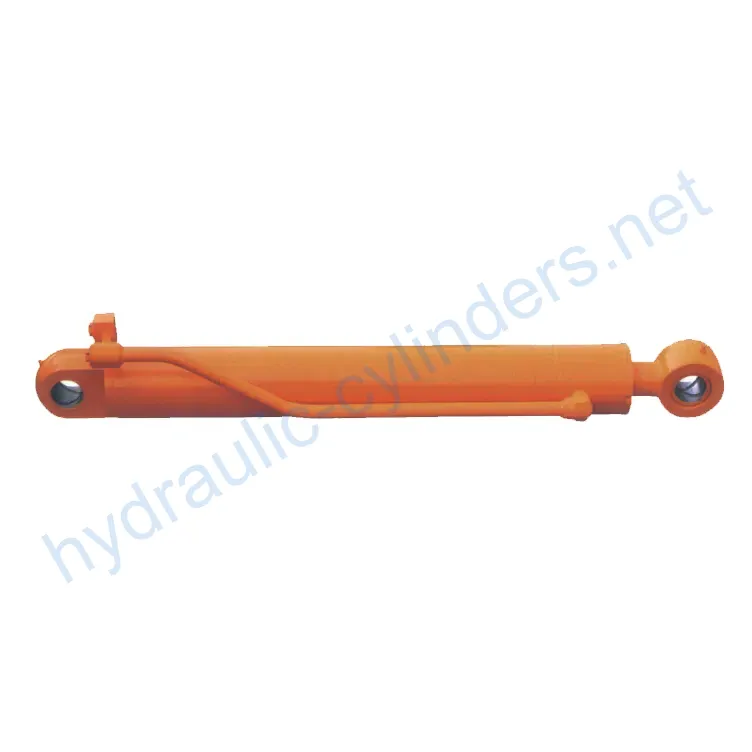Arm Cylinder For Nante NT60
Üheks hüdrosilindrite tootjaks, tarnijaks ja mehaaniliste toodete eksportijaks pakume hüdrosilindreid ja paljusid teisi tooteid.
Palun võtke meiega ühendust üksikasjade saamiseks.
Post:sales@hydraulic-cylinders.net
Tootja tarnija eksportija hüdrosilindrid.
Arm Cylinder For Nante NT60
An arm cylinder is a specialized hydraulic cylinder designed to provide linear motion and power to the arms of various machines such as excavators, cranes, and mechanical arms. The arm cylinder plays a critical role in hydraulic systems, enabling the effective movement and control of additional tools or attachments. These cylinders not only achieve smooth motion but also withstand heavy loads, ensuring efficient operation and reliability of the machinery under various working conditions.

Product Features
1. High-Efficiency Drive
The arm cylinder provides powerful linear motion and force, ensuring high efficiency of the mechanical arm in various operations.
2. Precise Control
Through hydraulic systems, the arm cylinder can achieve precise motion control, making the operation of additional tools more flexible and accurate.
3. High Durability
The arm cylinder is usually made of high-strength materials with good wear resistance and corrosion resistance, making it suitable for long-term use in harsh environments.
4. Multi-Functional Adaptability
These cylinders can be widely used in various mechanical equipment, such as excavators, cranes, and mechanical arms, to meet different working requirements.
5. Easy Maintenance
Designed with easy maintenance and replacement in mind, regular inspection and maintenance are more convenient, reducing equipment downtime.

Applications
1. Construction Engineering
In excavators and cranes, the arm cylinder is used to control the movement of buckets or booms for earthworks, material handling, and structural installation.
2. Manufacturing Industry
In automated production lines, the arm cylinder is used for the movement of mechanical arms, such as assembly, welding, and handling processes, improving production efficiency and accuracy.
3. Agricultural Machinery
In agricultural machinery such as harvesters and planters, the arm cylinder controls the movement of operating arms, performing tasks such as seeding, fertilizing, and harvesting.
4. Mining
In mining equipment, the arm cylinder is used to control the arm movement of the mining equipment, performing tasks such as ore extraction and handling.
5. Logistics and Transportation
In forklifts and handling robots, the arm cylinder is used to control the lifting and movement of the fork to achieve material handling and stacking.

Design Considerations and Selection Criteria
1. Load-Bearing Capacity
The load-bearing capacity is a critical consideration in the design of arm cylinders, ensuring that they can withstand the heavy loads and forces encountered in various applications.
2. Sealing
The seal of the arm cylinder is crucial in preventing leaks and maintaining the hydraulic system’s efficiency.
3. Durability
The arm cylinder’s durability depends on the materials used in its construction, ensuring good wear resistance and corrosion resistance for long-term use in harsh environments.
4. Safety
The arm cylinder’s safety is crucial in preventing potential hazards and ensuring safe operation in various applications.
5. Maintenance
The arm cylinder’s design should consider easy maintenance and replacement, allowing for regular inspection and maintenance to reduce equipment downtime.

Sealing and Lubrication
The arm cylinder uses various sealing components, such as piston seals and rod seals, made of wear-resistant materials such as polyurethane and nitrile rubber. The cylinder body and threaded end surface undergo fine processing to enhance wear resistance. Regularly adding the appropriate amount of hydraulic oil can ensure lubrication and improve the arm cylinder’s service life.
Regular Inspection and Preventative Maintenance
1. Visual Inspection
Regular visual inspections can identify any early signs of wear or damage, such as metal fatigue or corrosion, that could lead to equipment failure.
2. Component Replacement
Replacing worn or damaged components can prevent equipment breakdown, ensuring the hydraulic system’s efficient operation.
3. Lubrication
Regularly adding the appropriate amount of hydraulic oil can ensure lubrication and improve the arm cylinder’s service life.
4. Pressure Testing
Pressure testing can identify any leaks or other issues that could affect the hydraulic system’s efficiency.
5. Preventative Maintenance
Preventative maintenance can identify potential issues and address them before they become major problems, reducing equipment downtime and maintenance costs.

Product Installation Guide
Before installation, ensure that the hydraulic system is clean and free of debris or contaminants. Follow these steps to install the arm cylinder:
- Remove the old cylinder and clean the installation area.
- Install the new cylinder, ensuring proper alignment and torque.
- Connect the hydraulic hoses and fittings, ensuring proper sealing and torque.
- Test the cylinder’s operation, and adjust if necessary.
Safety and Environmental Considerations
Safety is critical when working with hydraulic systems and arm cylinders. Proper training, equipment, and procedures are essential to prevent injury or damage to equipment. Environmental considerations, such as proper disposal of hydraulic oil and components, are also crucial in reducing the impact on the environment.
Common Problems and Troubleshooting
1. Leaks
Leaks can result from worn or damaged seals, loose connections, or damaged cylinder components. Inspect the cylinder and replace any worn or damaged components.
2. Slow or Erratic Operation
This can result from issues with the hydraulic system, such as low fluid levels or damaged valves. Inspect the hydraulic system and replace any worn or damaged components.
3. Overheating
Overheating can result from issues with the hydraulic system, such as low fluid levels or excessive pressure. Inspect the hydraulic system and adjust if necessary.
About Us
We are a professional manufacturer of replacement hydraulic cylinders with a wide range of products, becoming one of the leading hydraulic cylinder manufacturers and wholesale distributors in the domestic and international markets. We always adhere to the principle of excellent quality, rely on the industrialized production management strategy of the fine manufacturing workshop, continuously improve our technology level and production efficiency. By introducing high-end digital manufacturing equipment and professional testing systems, we optimize the manufacturing platform, improve the product quality control process, and have strong innovation capabilities. Our goal is to meet the diverse needs of customers with the principles of high efficiency, accuracy, and high quality.


Author: lyl.
Tehke ekskursioon meie VR-tehases:
Tehke ekskursioon meie VR-tehases koos järgmisega
Hüdrosilindri kasutamine:


